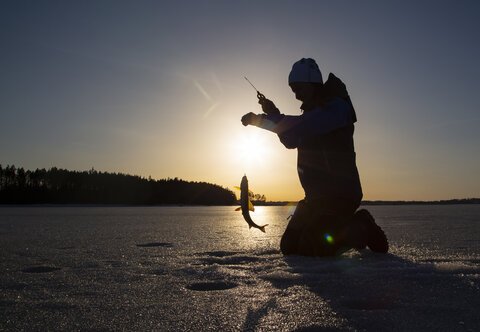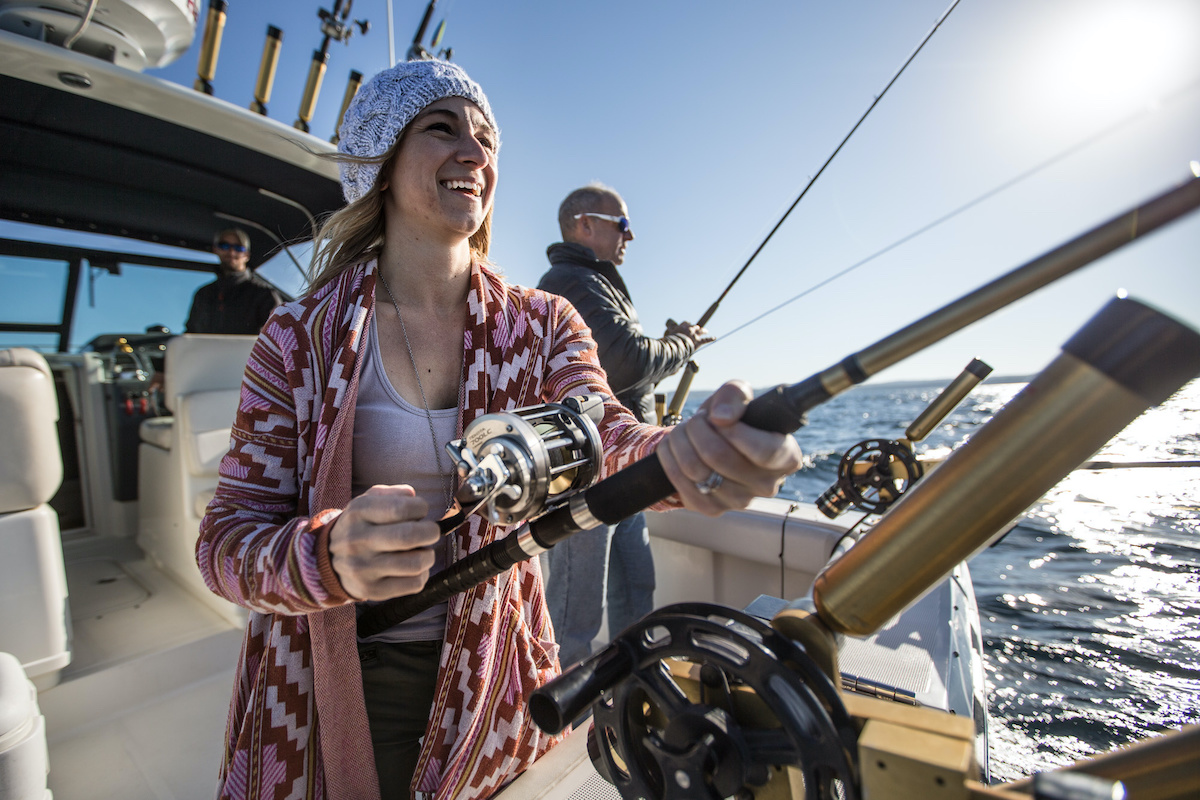Ice fishing is a rewarding experience, offering a unique perspective on the winter landscape and the opportunity to connect with nature in an interactive way. Success on the ice requires a combination of knowledge, preparation, and a bit of luck. This guide will provide ten ice fishing tips to enhance your adventures!
The Top 10 Ice Fishing Tips
1. Research Local Lakes and Ponds
First things first! Start by looking for bodies of water known for producing good ice fishing, such as those with abundant fish populations and suitable depths.
Different fish species have different habitat preferences. Research the target species in your area and choose locations that align with their preferred depths and structures.
2. Ice Safety
Now that you've done your research and chosen your frozen lake, the first thing you'll want to do is check the thickness of the ice. Before venturing onto the ice, ensure it's safe. Use an ice auger or chisel to check ice thickness regularly. A minimum of 4 inches of clear, solid ice is generally recommended for foot traffic.
Avoid areas of thin ice: Be wary of areas with dark ice, cracks, slush, or moving water, as these often indicate thinner ice.
Never fish alone: Always bring a buddy along. If you fall through the ice, having someone with you can significantly increase your chances of survival.
3. Dress Warmly
Proper layering can make or break any ice fishing excursion. Be sure to wear multiple layers of warm, insulating clothing, including a base layer, an insulating mid-layer, and a waterproof outer layer.
This includes your extremities, so wear insulated boots, gloves, and a warm hat and scarf to protect your hands, feet, and head from the cold. Also, be sure to avoid getting wet, as wet clothing will quickly lose its insulating properties and increase your risk of hypothermia.
4. Choose the Right Gear
The right gear on the ice can make or break any ice fishing trip. So, make sure you select the appropriate ice auger. Choose an ice auger that is the right size for your needs and the thickness of the ice.
Invest in a quality ice fishing rod and reel. A lightweight ice fishing rod and reel with a sensitive tip will help you detect subtle bites.
Experiment with different baits and lures, such as live bait (minnows, worms), jigs, spoons, and artificial lures, to determine what works best for the target species. Cut-up fish, egg shells, glitter and fish attractant, dead minnows, and bread can all be effective. Experiment and use what works best for you.
Pro Tip: An ice sled makes transporting gear much easier!
5. Organize and Overhaul Your Tackle
Go through your tackle and list what's missing (ensuring you have enough lures and terminal tackle). Stock up on these items before tackle shops run short once ice season is in full swing.
Once you've got your tackle, get it ready by popping paint out of lure eyes, sharpening hooks, and getting your tip-ups ready by checking that there is enough line on the spools.
6. Grab a Pair of Ice Cleats
Avoid slipping and falling on the ice this season with a pair of ice cleats. These micro spikes easily attach to your boots with rubber straps over the heels and toes and will make all the difference this season.
7. Master Ice Fishing Techniques
There are many nuances to master when learning how to ice fish. Start with how to present your bait effectively. Use various techniques to present your bait, such as jigging, dead sticking, and tip-ups.
Pro tip: Don't store your tip-ups in the heat over the summer. If you do and you're using underwater models, they might leak grease and will need to be lubricated. Then, once you've spent time on the ice, pay close attention to fish activity.
If you see fish feeding in a particular area, concentrate your efforts there. Lastly, be patient! Ice fishing often requires patience. Don't get discouraged if you don't catch fish immediately.
8. Stay Comfortable
There are many ways to make ice fishing more comfortable. A portable ice shelter can provide shelter from the wind and cold, making your ice fishing experience more enjoyable. Don't forget to stay warm and hydrated by sipping hot beverages like coffee, tea, or hot chocolate.
9. Learn from Others
When on the ice, you'll often see other anglers who always have a fish on the hook. Seeking advice from these experienced ice fishermen can provide valuable insights into local fishing spots, techniques, and regulations.
Consider joining an ice fishing club to connect with other enthusiasts, learn new skills, and participate in organized fishing trips.
10. Fish Ethically
Adhere to all local fishing regulations, including size limits, bag limits, and season restrictions. Consider practicing catch-and-release for trophy fish to ensure the sustainability of the fishery, and be sure to leave no trace by packing out all your trash and avoiding disturbing the natural environment.
Read Next: Tips for Respectful Anglers
The Top Ice Fishing Tips
By following these tips, you can enhance your ice fishing adventures, increase your catch rates, and ensure a safe and enjoyable experience on the ice. Remember to prioritize safety, respect the environment, and embrace the unique challenges and rewards that come with ice fishing.


